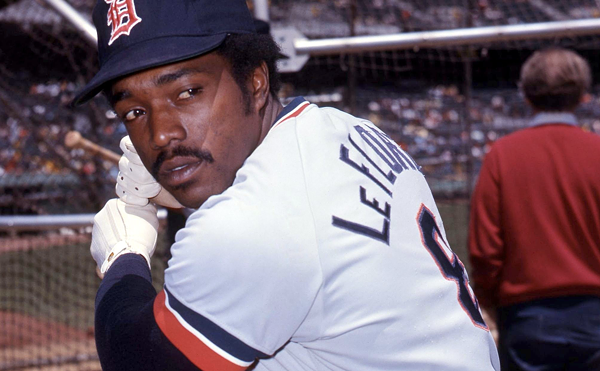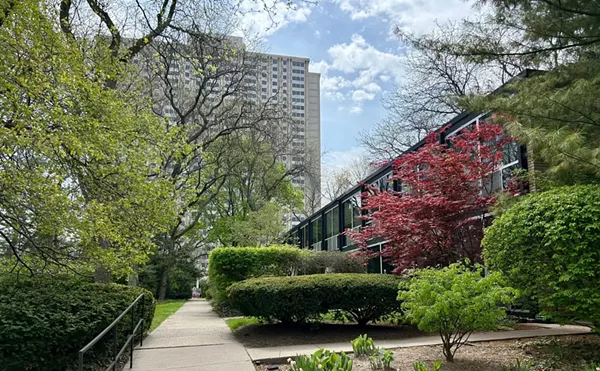
Audio By Carbonatix
[
{
"name": "GPT - Leaderboard - Inline - Content",
"component": "35519556",
"insertPoint": "5th",
"startingPoint": "3",
"requiredCountToDisplay": "3",
"maxInsertions": 100,
"adList": [
{
"adPreset": "LeaderboardInline"
}
]
}
]
When I first saw Tyree Guyton’s work, I was not very impressed, and for a long time I had no idea how political it was. This was partly because what I first saw of his work was some painted automobile hoods in an art gallery.
Primitive art, I thought. Colorful, crude. What’s all the fuss about? That was years ago, after Coleman Young had destroyed some of Guyton’s buildings but before Dennis Archer decided he, too, needed to prove he was something of a cultural know-nothing by doing the same thing.
Not until I went to Heidelberg Street by myself one day and looked closely at the brightly painted houses and at the other “found objects” in their glory, did I realize all these were symbols that had been carefully (and seemingly carelessly) arranged to send a powerful series of messages about life in Detroit.
Slowly, it dawned on me why much of the city’s political establishment felt threatened by this man’s work. Guyton, now 48, is a gentle giant who was born and grew up on Heidelberg, and whose life was shaped forever by the four days in July 1967 that are commonly called the Detroit riot.
Were it not for Guyton, this street, which was bustling three-quarters of a century ago, would be virtually dead. Heidelberg had a proud history — it was on the fringe of Detroit’s historic Black Bottom community. Helen Thomas, the pioneering woman journalist, grew up right here. The street was packed with families, white and black, back in the 1920s.
Most of the people and houses are long gone. Yet Guyton’s work remains, a splash of color on a canvas of neighborhoods which otherwise mostly resemble Europe at the end of World War II. What the Heidelberg Project is all about is a damning indictment of Detroit — and a triumphal affirmation of hope.
What you see when you look carefully is a rejection of a political system that has made so much of Detroit a hulking, disgraceful ruin. Yes, racism and greed have been responsible for much of that. But Tyree Guyton’s work fairly screams an indictment of a black social, political and religious establishment that substitutes religion and excuses for leadership.
Two mayors succeeded in having part of the project and several of the houses bulldozed, officially for safety reasons that amount to horse exhaust. Just east of the block that Guyton and his polka dots have transformed, the hulking skeleton of what appears to be a long-abandoned factory looms over a nearby street.
“They’ve never shown any interest in tearing that down,” he snorted one recent morning.
Jenenne Whitfield, a former bank loan officer, nodded in agreement. She turned down the street one day by accident in 1995 and wondered “what the hell all this was?”
Guyton was there; they talked, then she started looking more carefully. Before long, she had left the bank to become executive director of the project at a fraction of the pay. She later married Guyton.
These days, she has been mainly working on organizing and focusing the project; there is a fairly decent Web site now (www.heidelberg.org) and she’s working on grant applications. (They had high hopes for getting one from the “Cool Cities Pilot Program,” but were rejected, which ought to have been no surprise. Something this revolutionary was apt to be seen as way too “outside the box” for the administration of our warm and fuzzy governor.)
For me, Heidelberg’s legitimacy doesn’t lie in its powerful and occasionally funny images, such as the “marching broken vacuum cleaners,” which Guyton privately calls “Detroit City Council.”
To me, the moment of truth came when I was on the street and a pack of bright and cheerful 4-year-olds came, shepherded carefully by their guardians. They were, they told me happily, from “East Side Head Start” and they were here, a teacher told me, to see something beautiful.
Some might not have much beauty in their lives. You cannot really understand any art out of its context. Helen Thomas once told me she disliked Guyton’s work. “He attached toilets and other strange things to our old house,” she said.
What she didn’t understand was that her street and her city had fallen on such hard times that what Tyree Guyton did was wildly appropriate.
Before you ask — no, I wouldn’t want the artist attaching toilet seats on houses in my mildly elegant and wonderfully groomed suburban community.
Does that make me a hypocrite? I don’t think so. If there were rotting factories in the suburb where I live, and officials were unresponsive to its citizens and their needs, and broken glass and drab broken brick was the aesthetic alternative, I would say it was time to reach for a weapon.
For Guyton, that’s a paintbrush. During the gloomy ’70s, when others talked of revolution, the doomed folksinger Phil Ochs used to say, “Ah, but in such an ugly time, the true protest is beauty.” If you’re not an East Sider, wander around there on a sunny day, then go to Heidelberg Street. Protest is not dead.
Mourning doves: Speaking of our governor, this column hasn’t said much about her for a good long while, largely for the same reason I haven’t said much about former President William Henry Harrison (d. 1841); neither has done much the past couple years.
However, we can now report that our governor signed a bill last week changing the dove’s classification from a songbird to a game bird, so that people can blow them away with guns. She had, the Humane Society of the United States angrily noted, signed a campaign pledge not to do this.
“Jennifer Granholm lied to voters, and she has doomed millions of doves to suffering and pain,” the Humane Society’s CEO, Wayne Pacelle, fumed. Get a grip, Wayner: Doves don’t vote. Hunters do.
Jack Lessenberry opines weekly for Metro Times. E-mail letters@metrotimes.com




